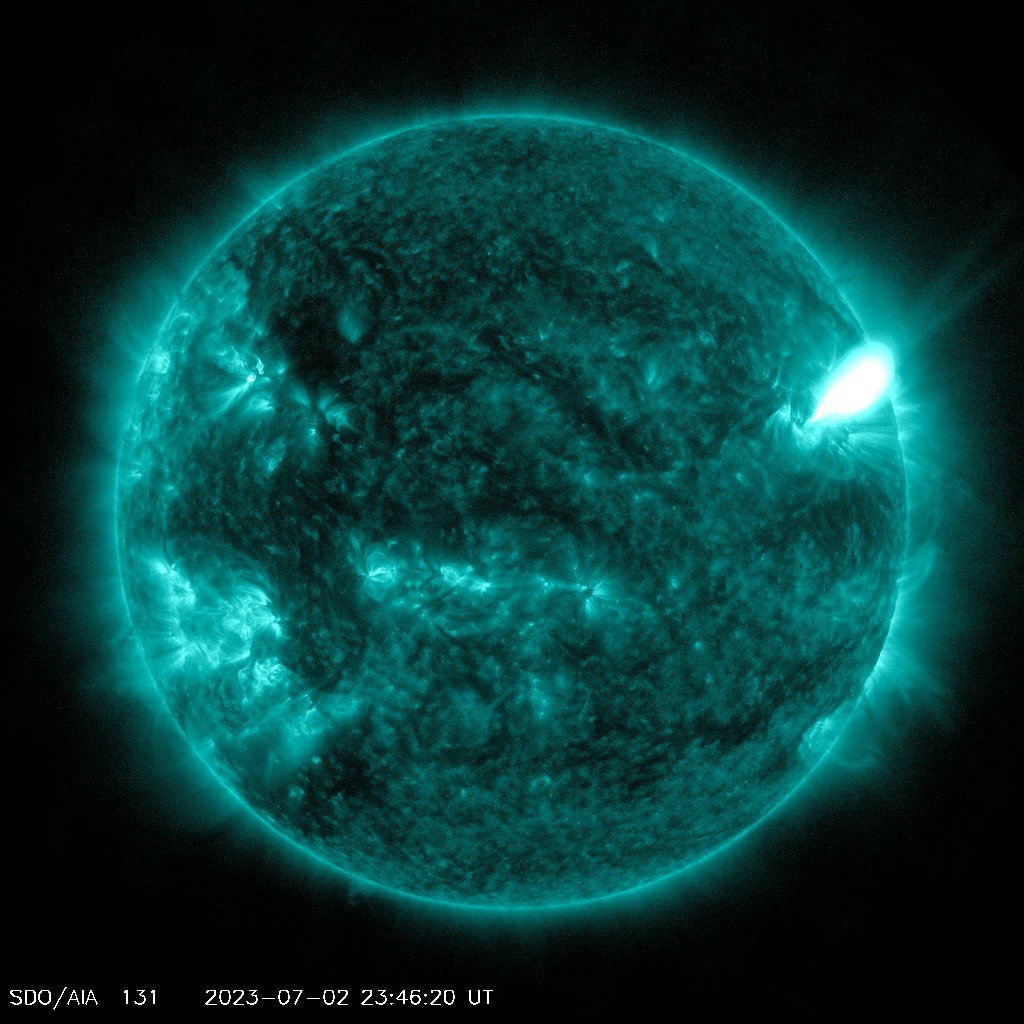
On Sunday, NASA’s Solar Dynamics Observatory (SDO) captured the moment that the Sun blasted out an X-class solar flare, a flash of high energy categorized as the star’s most powerful.
Each day, when the Sun rises and sets, it is at once reliable yet inconsistent. Its patterns are predictable decades into the future. For example, astronomers know that the Sun is currently approaching the most volatile phase in its decadal cycle. They also know other cool tidbits, like that the star and the Moon will perfectly align to produce a sweeping total solar eclipse across North America next year.
But the Sun can also impact Earth suddenly. In the case of the X1.0 class solar flare that erupted on Sunday, the unleashed ultraviolet radiation had the potential to disrupt radio communications and create auroras on our planet. This radiation would take days to reach us because of the distance between the Sun and Earth.
The space agency announced the flare observation on Monday via the SDO mission’s blog, and paired the description with a new image.

Don’t look at the Sun, unless you’re a machine
Every 11 years, the Sun goes from a lull to an awakening. The Sun is riddled with magnetic field lines that twist and reconnect, culminating in a dramatic release of stored energy via solar flares. The Sun will soon reach the height of its activity cycle. And this phase is characterized by strong flares.
A safe way people can and have historically observed solar flares without risking permanent eye damage was during total solar eclipses. No one should ever look directly at the Sun, and so NASA created a spacecraft to do just that. It launched SDO in 2010, and in the dozen years since the spacecraft has offered coverage for the solar activity cycle’s expanse.
What’s to come
Flares and an associated solar event called coronal mass ejections (CMEs) will be more common in the next several years.
Two days after the X1.0 solar flare, the Sun expelled a CME. This triggered a geomagnetic storm watch from the U.S. National Weather Service, in place for Friday.
When solar particles travel in Earth’s direction, they interact with the planet’s magnetic field. “Solar flares are powerful bursts of energy. Flares and solar eruptions can impact radio communications, electric power grids, navigation signals, and pose risks to spacecraft and astronauts,” NASA officials wrote on Monday.
More of these events are expected to arise as the Sun approaches solar maximum in July 2025.







